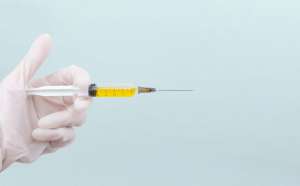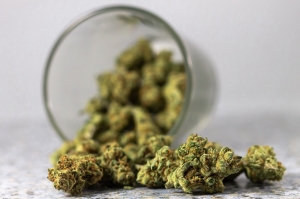After a heavy lifting session, your muscles need some serious TLC to bounce back quickly and keep you moving forward. Incorporating proper nutrition, like protein-rich meals, can significantly speed up muscle recovery. Hydration also plays a crucial role; you'll want to keep those water bottles close and drink up consistently throughout the day.
Another great way to hasten recovery is through active rest. This can be as simple as taking a slow walk or doing some light stretching. These activities help to increase blood flow to your muscles, aiding in the repair process.
Lastly, don't underestimate the power of quality sleep. Your body does most of its repair work while you're catching those Z's. Aim for at least 7-8 hours of sleep per night to give your muscles the best chance to recover and grow stronger.
Understanding Muscle Recovery
Managing muscle recovery after heavy lifting is crucial for muscle repair and preventing soreness. You need to know how your muscles rebuild and the signs of overtraining that could hinder your progress.
The Science of Muscle Repair and Growth
When you lift heavy weights, you create tiny tears in your muscle fibers. Your body repairs these fibers through a cellular process where muscle fibers fuse together to form new muscle protein strands, or myofibrils. This process is called muscle hypertrophy, leading to overall muscle growth.
Key Players:
- Growth Hormone & Testosterone: Critical for muscle repair and growth.
- Nutrition: Protein intake aids in repairing and building muscles.
- Rest: Sleep and rest days are crucial for recovery.
Recognizing Overtraining and Its Impact
Pushing yourself too hard without adequate recovery can lead to overtraining. This can cause fatigue, decreased performance, and prolonged muscle soreness, often referred to as delayed onset muscle soreness (DOMS).
Signs of Overtraining:
- Persistent muscle soreness
- Decreased performance in workouts
- Fatigue and low energy levels
Balancing intense workouts with proper recovery methods helps prevent overtraining, ensuring continuous muscle growth and repair.
Optimizing Nutrition for Recovery
To speed up muscle recovery after heavy lifting, consider focusing on key nutritional aspects like protein and amino acids, carbs and fats, and staying hydrated. These components are critical in repairing tissues, replenishing energy stores, and maintaining overall hydration.
The Role of Protein and Amino Acids
Protein and amino acids are essential for muscle repair. Incorporate protein-rich foods like chicken, fish, and tofu into your diet. Using protein supplements like whey protein or protein powder can be convenient. Amino acids, especially BCAAs (Branched-Chain Amino Acids), play a significant role in muscle recovery.
Creatine Monohydrate is another valuable supplement. Creatine monohydrate powder can enhance muscle recovery by improving overall muscle hydration and energy availability. Creatine supplements are popular for both muscle recovery and growth.
Carbohydrates and Fat Intake for Muscle Recovery
Carbohydrates are crucial in replenishing glycogen stores depleted during heavy lifting. Post-workout meals should include high-glycemic index carbs like rice, potatoes and even snacks like chocolate milk for quick absorption.
Healthy fats are essential for overall health and can help reduce inflammation. Include sources like avocados, nuts, and olive oil. Balancing your macronutrients (protein, carbs, fats) is key to full recovery.
Hydration: Water and Electrolytes
Staying hydrated is vital for muscle recovery. Drink plenty of water throughout the day. Electrolytes lost in sweat need replenishing. Electrolytes like sodium, potassium, and magnesium can be found in coconut water and sports drinks.
Consider adding cherry juice for its anti-inflammatory properties, which can help reduce muscle soreness. Hydration supports efficient nutrient transport to working muscles, aiding in recovery and performance.
Active Recovery Strategies
Active recovery helps your muscles heal faster by incorporating light activities that keep blood flowing without straining them.
Post-Workout Stretching and Foam Rolling
Stretching after a workout is essential. It helps reduce muscle tension and improves your range of motion. Try to hold each stretch for at least 20-30 seconds.
Using a foam roller can also be a game-changer. It helps release muscle knots and increases blood circulation. Take 5-10 minutes to foam roll major muscle groups. Focus on areas that feel tight to promote relaxation and recovery.
Incorporating Rest Days and Sleep
Rest days are crucial for muscle recovery. Schedule at least one or two rest days per week to let your muscles repair and grow.
Equally important is getting enough sleep. Aim for 7-9 hours per night. Quality sleep allows your body to repair tissues efficiently. Consider maintaining a consistent sleep schedule for optimal results.
Low-Intensity Movement and Exercise
Engage in low-intensity activities like walking, swimming, or yoga on your active recovery days. These exercises keep your body moving without adding stress.
Light exercises like these can boost blood flow to your muscles, aiding in quicker recovery. It's also a good way to maintain your workout routine while allowing your body to rest.
Supplemental Recovery Techniques
To maximize muscle recovery after heavy lifting, consider integrating massage therapy and compression garments, along with strategic use of key supplements and superfoods to enhance and speed up the healing process.
The Benefits of Massage and Compression Clothes
Massage is great for easing muscle soreness and improving circulation.
Massage therapy helps increase blood flow, which delivers nutrients to tired muscles, promoting quicker recovery. Consider scheduling regular sessions with a professional or using a foam roller for self-massage.
Compression garments such as compression socks and sleeves can be worn during and after workouts. These garments aid in reducing muscle swelling and easing pain. By compressing the muscles, they help to enhance blood flow which speeds up the removal of metabolic waste products.
Combine both massage and compression gear for an effective approach to reducing post-workout muscle fatigue and stiffness.
Strategic Use of Supplements and Superfoods
Certain supplements and superfoods play a big role in muscle recovery.
Protein powder is essential for muscle repair and growth. Consuming a shake with whey or plant-based protein shortly after your workout can help kickstart the recovery process.
Branched-chain amino Acids (BCAAs) like leucine can reduce muscle breakdown and soreness. Taking BCAAs before or after your workout can be particularly effective.
Creatine monohydrate powder improves strength and muscle mass recovery. Omega-3 fatty acids, found in supplements or foods like salmon, reduce inflammation.
Vitamins and minerals are crucial for muscle function and recovery. Consider a multivitamin to cover your bases. Incorporating quinoa and cottage cheese in your post-workout meal plans provides essential nutrients that aid in muscle recovery.






